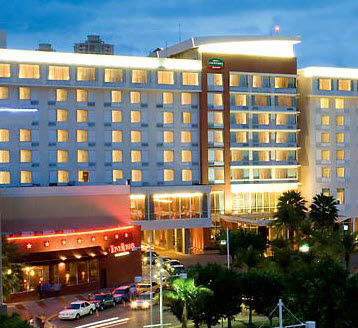Post Views: 208

A report by the Instituto Tecnológico Hotelero summarizes the main areas that travelers use to qualify a hotel as good or bad.
The report entitled “#Hotelfacts or how to add value to a hotel stay”, summarizes the research in the form of some recommendations that any hotel can apply to aspects directly related to improving the customer’s experience, and to help to increase competitiveness.
Clear trends in five areas
#Hotelfacts results are based on the opinions shared by Twitter users using this tag, and can be divided into five major areas.
– Technology
– Equipment and facilities
– Internal processes associated with the use of the facilities
– F & B (Food and Beverages)
– Customer Experience
Wi-Fi in hotels, more outlets and technology available to the client, breakfast quality, flexible hours check-in and check-out, and a more friendly, approachable and friendly are the main requests from users of Twitter clients Spanish hotel, who participated in # hotelfacts
The Hotel Technology Institute, as part of its outreach on the positive effect of new technologies and innovation in hotel management, has launched an initiative to harness the collective knowledge of social networks: # hotelfacts.
For the second consecutive year, ITH has launched this online experience on Twitter, which invites users and customers of hotels to comment, while not specifically mentioning the establishment or the mark in question, what were the situations that do not add value to the experience, and make more positive proposals to make the stay at the hotel, whether for business or leisure. The key is to obtain, using the hashtag # hotelfacts, constructive criticism that hoteliers can incorporate in any area of hotel management and that directors and managers of properties is difficult to detect because they go unnoticed or are lost in the day day.
The results of # hotelfacts are based on the opinions that Twitter users shared using this tag, and can be divided into five main areas: technology, equipment and facilities, internal processes associated with the use of facilities, F & B (food and beverages ) and customer experience.
Observations and user comments have affected specific aspects, some more frequently than others. These aspects have been classified, depending on the repetition frequency, assigning a score of 1 to 5 (1 represents the lowest frequency, 5 to the maximum frequency). Wi-Fi in hotels, more outlets and technology available to the client, breakfast quality, flexibility in hours of check in and check-out, and a more friendly, approachable and friendly, have been the most discussed and requested by users who participated in this experience.
How and when did # hotelfacts
This year, we have taken the first long vacation at Easter, to repeat the initiative on Twitter, which last year became a trending topic, and start a new conversation that has taken the vast collective intelligence of social networks. With # hotelfacts we have tried to find commonalities that improve operational aspects of events or, apparently, do not respond to a business logic or customer clear and that can be extrapolated to other hotels or at least a representative number of establishments.
This year also we have had the valuable collaboration of Pirendo, Spanish leading company dedicated to intelligence and analytics in social media, which shall make a quantitative study of the initiative # hotelfacts, and ITH complemented by qualitative analysis created by the Spanish firm Díptere. All this work is summarized in a series of recommendations that any hotel can be applied to improve aspects related directly to the customer experience, and is available to all professionals in the hospitality industry, with the aim of increasing the competitiveness of the sector.
The report details the main areas where customers find the service they receive satisfactory or unsatisfactory.
